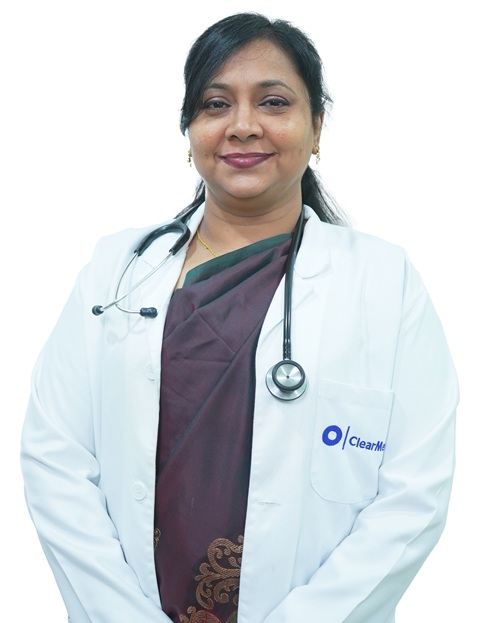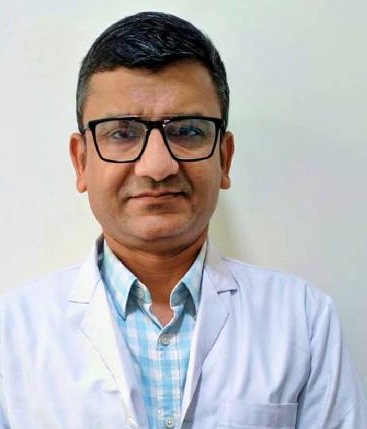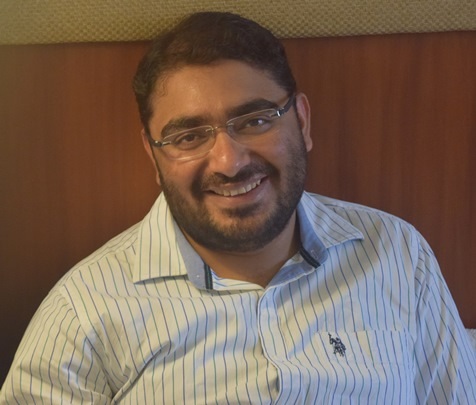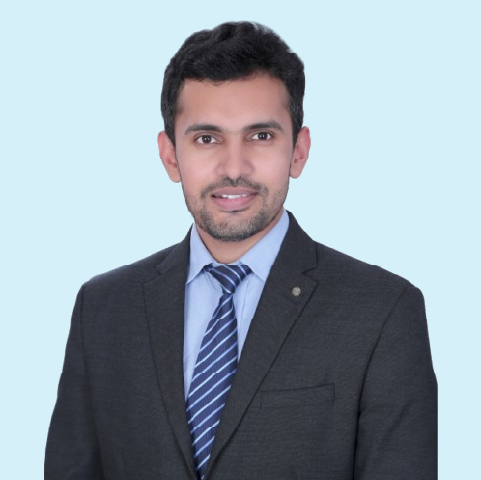Breast Augmentation Surgery - Recovery, Side Effects, Results
Dr. Priyanka Sharma

Treatment Duration
60 Minutes
------ To ------90 Minutes
Treatment Cost
₹ 70,000
------ To ------₹ 1,70,000

Table of Contents
- What is Breast Augmentation Surgery?
- Types Of Breast Augmentation
- Who needs Breast Augmentation?
- How is Breast Augmentation performed?
- What to expect before and on the day of Breast Augmentation Surgery
- What to expect after Breast Augmentation?
- Benefits of Breast Augmentation Surgery
- Risks and Complications of Breast Augmentation Surgery
- Cost of Breast Augmentation Surgery
- Conclusion
One of the most popular plastic surgery treatments and one that plastic surgeons conduct the most frequently is breast augmentation. It is a surgical treatment used to increase breast size. Implant implantation or, less frequently, fat transfer are two methods of augmentation.
It is preferred by a woman who is self-conscious about their breast size and wants to alter the size. The procedure is also done due to medical causes like breast cancer.
| Surgery Name | Breast Augmentation Surgery |
| Alternative Name | Augmentation mammoplasty |
|
Benefits of the Surgery |
Better Self-esteem, Long-lasting Effects, Improving The Shape of The Breasts Post Pregnancy, Breast Restoration After Mastectomy |
|
Performed by |
Plastic Surgeon |
You can check Breast Augmentation Cost here.
What is Breast Augmentation Surgery?
- Breast Augmentation, also known as augmentation mammoplasty, is a surgery to increase breast size. This surgery involves enhancing the shape of the breasts and making them symmetrical. “Boob job” is a commonly used slang word for this surgery.
- Breast augmentation surgery involves placing the implants in the breast tissue or under the chest muscle.
- This surgery is performed as an outpatient procedure under general anaesthesia.
Anatomy of the Breast
- The female breasts are paired with tear-shaped, milk-producing glands attached to the front of the chest wall on either side of the breastbone. The breast has no muscle tissue, but the muscles are present beneath each breast and cover the ribs.
- Each breast has 15 to 20 lobes arranged circularly. Each lobe branches out to many lobules that end in bulb-like sacs or glands which produce milk. The lobes, lobules and bulbs/sacs are connected by thin tubes known as ducts.
- These ducts deliver milk to the opening in the nipple (a raised area in the centre of the breast). The nipple is in the centre of the dark, circular, pigmented area on the skin of the breast (areola). Between the lobules and ducts, fat is present. This fat layer is responsible for giving the breast its shape and size.
Breast Augmentation Videos by HexaHealth
Expert Doctors (10)
NABH Accredited Hospitals (10)


Types Of Breast Augmentation
Breast augmentation is done using artificial implants or fat transfer. Let us look at each one in detail.
- Breast Implants: Breast implants are the most preferred breast augmentation method. There are a variety of implants that can be used.
- Saline Breast Implant: These implants are made of sterile saline water (salt water). They are safe, as even in rare instances if the implant were to break open, the body would absorb the saline water and get rid of it naturally.
- Structured Saline Breast Implant: These implants are filled with sterile saline water (salt water). They have an inner structure that makes the implant feel more natural.
- Silicone Breast Implants: These implants are made of silicone gel. Getting these implants would mean the woman must see her plastic surgeon regularly to ensure the implants are working properly. These implants can break open, and the silicone gel either stays inside the implant structure or leaks into the breast tissue.
- Form Stable Breast Implants: These implants are made of a thicker silicone gel. They are also called "gummy bear" breast implants. The implants, even if broken, retain their shape and stay inside the implant's shell. However, the surgeon must make a longer incision on the skin while inserting these implants during surgery. This may be cosmetically unacceptable to some women.
- Round Breast Implant: These implants, as the name suggests, are round in shape. They give a fuller structure to the breast. Since the implants are round, there is no change in the appearance of the breast, even if they move out of place.
- Smooth Breast Implants: These implants are the softest of all implants. They give a naturally enhanced look to the breasts.
- Textured Breast Implants: These implants create scar tissue to help the implant adhere. Though rare, these implants are associated with Breast Implant Associated-Anaplastic Large Cell Lymphoma (BIA-ALCL), a form of cancer.
- Fat Transfer Breast Augmentation: This type of breast augmentation is reserved for women who require a slight increase in the size of their breasts. The surgeon will perform liposuction to remove fat from some body parts and inject that fat into the breast tissues. The most commonly preferred areas for fat removal include:
- The belly
- Lower back
- Sides of your back (flanks)
- Thighs
Who needs Breast Augmentation?
Women choose to enhance their breasts for several reasons. These typically include:
- Increasing the size of the breasts if they are too small
- To change the symmetry of the breasts in cases where one breast is smaller or bigger than the other one
- To correct the appearance of the breast after significant weight loss or post-pregnancy.
- To correct the unevenness of the breast tissue after breast surgery for other conditions like cancer
- To improve body positivity and self-esteem
How is Breast Augmentation performed?
Preparing For Breast Augmentation Surgery
The plastic surgeon will talk to the patient in detail about the procedure. The patient will be informed about the need for surgery, the outcomes and the possible risks of breast augmentation surgery.
The surgeon will provide detailed instructions on the preparation for surgery.
- Getting the required diagnostic and imaging tests done. These include:
- Routine Blood Tests: These are standard tests before surgery that rule out any abnormal health condition present in the patient.
- Mammogram: This is an x-ray of the breasts which helps diagnose any underlying conditions like cancer.
- ECG: An electrocardiogram of the heart helps the surgeon to understand the chances of the patient experiencing any heart-related complications during the breast implant.
- Stopping certain medications like blood thinners, anti-inflammatory drugs and herbal supplements a couple of days before surgery
- Adjusting the dose of the medicines the patient may be taking for other health conditions.
- Avoiding smoking and alcohol intake for about some weeks before surgery.
- Informing the patient about the duration of the surgery (1 to 2 hours).
The patient will also be advised on post-surgery care to be taken.
During Breast Augmentation Surgery
Breast augmentation surgery takes approximately 1 to 2 hours and involves the following steps:
- Anaesthesia: General anaesthesia is the anaesthesia of choice for this surgery. The surgeon will wait for the patient to fall asleep before he starts operating. Though general anaesthesia is the preferred method, local anaesthesia can sometimes be used. The surgeon will decide on the type of anaesthesia to be used.
- The Incision: The surgeon may perform the incision in one of the following areas:
- The crease under the breast (known as the inframammary fold)
- Along the edges of the areola, the dark-coloured area around the nipples (known as periareolar incision)
- Via the armpit (known as trans axillary approach)
- The surgeon will discuss these methods with the patient before the surgery and evaluate the best type of incision for the desired requirements.
- Implant insertion: The implant can be inserted in two ways. The placement of the implant also depends on the type of implant and the size of the implant.
- The surgeon will insert the implant under the breast tissue and above the chest muscle.
- The other way of inserting is to place the implant below the chest muscle.
- Closing The Incision: Once the implant is in place, the surgeon will use sutures or staples to close the incisions. He may place a drainage tube too. The breasts will then be covered with gauze. The patient will be given a surgical bra to wear at home.
What to expect before and on the day of Breast Augmentation Surgery
Before the Surgery
The nursing staff will have to check up on a few points:
- The signing of the consent form by the next of kin
- Preparation of the surgical site (cleaning, shaving)
- Removal of dentures and jewellery and changing into an operation theatre (OT) gown
- Administering the medicines prescribed before surgery
- Monitoring of vitals (blood pressure, pulse rate, respiratory rate, heart rate)
- Shifting the patient to Operation Theatre
On The Day of the Surgery
Once the patient has been admitted to the hospital, the nursing staff will ensure that:
- Her preoperative tests have been done, and the reports are in place
- She has stopped medications like blood thinners and herbal supplements, and anti-inflammatory medicines
- She has avoided alcohol and tobacco for a few days
- She has someone to drive her home post-surgery
What to expect after Breast Augmentation?
Once the surgery is completed:
- The patient will be moved to a recovery room, where the vitals will be monitored. Once the vitals have stabilised, the patient will be made to walk with support. Breast augmentation surgery is an outpatient procedure, so the patient can go home the same day. In some cases, depending on the patient's condition, the surgeon may ask the patient to stay in the hospital for a day.
- She will be given a prescription for medication at home.
- The doctor will advise how to care for the operated area.
- A follow-up appointment will be scheduled for a dressing change and drainage tube removal.
- A diet chart to follow at home that will help in healing quickly will be shared.
The patient will need to rest for a minimum of seven days, after which the stitches can be removed. She will be advised not to lift heavy objects and get involved in strenuous physical activity for at least four weeks post-surgery.
Benefits of Breast Augmentation Surgery
Breast augmentation can benefit you in multiple ways. Some of these are:
- Better Self-esteem: Breast implants make a woman feel more confident and happy with her body. This, in turn, boosts self-esteem.
- Long-lasting Effects: Breast implants can last 10 to 20 years. This means one no longer has to worry about your breasts sagging with age!
- Improving The Shape of The Breasts Post Pregnancy: Multiple pregnancies tend to make the breast tissues lose and give them a saggy appearance. Getting a breast implant will make the breasts look fuller and perkier.
- Breast Restoration After Mastectomy: Getting a breast removed as a part of cancer treatment can make a woman lose confidence. Breast implants can be done for cosmetic and reconstructive reasons, thus restoring the woman’s self-esteem and confidence.
Risks and Complications of Breast Augmentation Surgery
As with all surgeries, breast augmentation risks and complications are also present:
- Immediate Complications: These complications are seen rarely. Immediate complications include:
- Infection
- Wound healing issues
- Hematoma (collection of blood in the operated area)
- Long-term Complications: These form over time and include:
- Scar tissue formation around the site
- Sagging of the implants
- Symmastia: This is a condition when the implants travel towards the centre of the chest and give the appearance of a continuous breast.
- Seroma (fluid around the implant)
- Rupture of the implant
- Breast Implant Associated-Anaplastic Large Cell Lymphoma (BIA-ALCL), a form of cancer. This is a rare complication.
Cost of Breast Augmentation Surgery
Breast Augmentation surgery costs between Rs 70,000 to Rs 1,50,000. The cost may vary from individual to individual as several factors affect the pricing. Some factors that influence the cost of this surgery include:
- The extent of augmentation
- Type of incision for augmentation
- Type of implant used
- Choice of hospital
- Hospitalisation charges
- Pre-operative tests and diagnosis rates
- Surgeon’s operating charges
- Medications prescribed
- Post-operative care
- Follow-up consultations
| Procedure Name | Cost Value |
|
Breast Augmentation Surgery |
Rs 70,000 to Rs 1,50,000 |
Conclusion
Breast augmentation surgery is a procedure to enhance the shape and size of the breast. This surgery helps with improving body positivity and self-confidence. You can enhance your breast with various implants—the surgery guarantees firmer, perkier breasts for an extended period. A regular check-up will ensure that your breasts stay in the pink of health.
Reach out to our team of experts at HexaHealth for any doubts regarding breast enlargement. Our doctors, surgeons and dieticians will ensure that you receive world-class care from start to finish. Please book your free online consultation with HexaHealth by calling on our toll-free number now!
Frequently Asked Questions (FAQ)
How do I know if something is wrong after breast augmentation?
Several indicators provide insight that something has gone wrong after breast implantation. There may be a rupture leading to deflation of the implant. Sometimes the breast implant may shift in position, giving an aesthetically bad appearance. Pain at the incision site due to contracture and scar formation, infection or due to blood/fluid collection and fever are some other signs that something is wrong with the implant.
What is the most common complication of breast augmentation surgery?
The most common complication after breast augmentation surgery is thick scar tissue that does not fade. Rupture of the implant leading to leaking of silicone, noticeable folds in the implants and hardening of the breast tissue due to implant contraction are some other complications.
How do you know if your body is rejecting breast implants?
When the body rejects the implants, there may be some symptoms of auto-immune reactions (when the body attacks its cells along with the foreign cells). The symptoms include joint pain, muscle aches, fatigue, dry mouth, memory issues and difficulty concentrating. This is usually seen when the implant is old.
How long after breast augmentation do you see results?
Post the surgery, the implants need to settle into their position, and all the swelling needs to subside. All this takes a while. It may be about 3 to 4 months post-surgery that you may notice results.
Do breast implants look smaller at first?
For a few days after surgery, the breast muscles will be tight and compress the implant. This will make your breasts look smaller. Gradually, as the tension in the breast muscles eases, you may notice your breasts becoming more prominent in size.
Do you gain weight after breast augmentation?
Most women gain weight after surgery. The weight of the implant has only a small role in this weight gain. Most of it has to do with the rest and recuperation process post-surgery.
What is breast augmentation?
Breast augmentation is the surgery for enhancing your breasts. This is done by inserting artificial implants into the breast tissue. The type and size of the implant will be decided based on your requirements for breast augmentation surgery.
How long do I have to sleep sitting up after breast augmentation?
After breast augmentation surgery, there will be a lot of swelling around the breasts. Sleeping in an upright position helps reduce the pressure of the fluids around the implants. This leads to faster healing. You must sleep upright for at least two months post-surgery till the swelling subsides.
What is the fastest way to recover from breast augmentation?
Some of the ways to help recover faster post-surgery include a good diet, taking medications on time, avoiding heavy lifting, sleeping on your back or in an upright position and avoiding ill-fitting clothes and underwired bras.
Can you massage your breasts too much after breast augmentation?
Massaging your breasts after surgery can help in several ways. It improves the blood flow to the operated area, helps to drain the excess fluid and the lymph nodes, and also reduces the chances of scar tissue formation. Be sure that you massage gently, though. Too much pressure can cause the opposite effects!
What happens if I move too much after breast augmentation?
Moving too much and too soon will delay the breast augmentation recovery process. It may cause the implants to shift in position. The bruising and soreness may increase. The swelling, too, will take time to subside.
What is abnormal pain after breast augmentation?
Some amount of pain after surgery is expected and very typical. However, if the pain is accompanied by fever, warmness and fullness in the breast, it is not normal. It warrants an immediate visit to the surgeon.
What are the breast augmentation side effects?
The side effects of this surgery include scar tissue formation, loss of sensation in the breast and nipple, blood and fluid accumulation and infection. Long-term breast augmentation side effects include the implants' sagging, shifting and rupture.
What does a breast implant feel like?
The feel of the breast implant depends on the type. A silicone implant will give a naturally smooth and soft, curvy feel. While a saline implant will provide a hard and firm feel to the breast.
How long does it take for breast incisions to close?
Breast incision may take anywhere between 2 to 4 weeks to close. The length of the incision, the surgeon's skill and the quality of rest and recovery are some factors that affect the time breast incisions take to close. Adequate rest, following the post-operative instructions properly and keeping the area clean and dry will help to heal the incisions faster.
What helps stitches after breast augmentation?
- In this surgery, the sutures are not visible at the surface of the incision. The sutures are generally made with dissolvable material. The surgeon will apply a waterproof dressing over the sutures.
- It would be best if you were sure that this area is kept completely dry after surgery for a minimum of 48 hours. After that, avoiding hot water and direct water pressure on the suture area is advisable.
Do breast implants look bigger after they heal?
Immediately after surgery, the breast muscle will be tight and tense. Due to this, the breast seems small even after implant insertion. Gradually as the swelling subsides, the tension will ease, and the muscles will relax. This will make the breast look more prominent and enhanced.
What happens if I lift my arms after breast augmentation?
Lifting your hands above your head after surgery will lead to discomfort and will create extra tension in the operated area. The sore and bruised feeling may increase, and the implant may shift slightly in position. Doctors recommend not lifting your hands above the head for a minimum of 4 weeks after surgery.
Can I bend after breast augmentation?
Stretching, bending, reaching out, bending forwards and backwards, and exercising can all cause damage to the sutures and lead to bleeding. This may also cause the implant to shift in position. Avoid all such activities for a minimum of four to six weeks after surgery.
Breast Augmentation Cost Videos
More Treatment options
Last Updated on: 23 December 2024
Reviewer

Dr. Priyanka Sharma
MBBS, DNB Plastic Surgery, Training in Hand and Microvascular Surgery, Training in Hair Transplant
15 Years Experience
Dr Priyanka Sharma is a highly regarded Plastic, Reconstructive, and Aesthetic Surgeon with over 15 years of experience.
She is currently associated as a Consultant with:<...View More
Author

Sparshi Srivastava
B.Tech Biotechnology (Bansal Institute of Engineering and Technology, Lucknow)
2 Years Experience
An ardent reader, graduated in B.Tech Biotechnology. She was previously associated with medical sciences secondary research and writing. With a keen interest and curiosity-driven approach, she has been able to cont...View More
Breast Augmentation in Top Cities
Breast Augmentation Cost in Top Cities
Latest Health Articles
Other Treatments in Your City
























